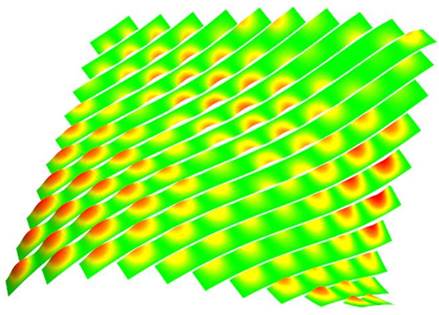
Authors
Roudy Wehbe, Brian Tatting, Sreehari Rajan, Ramy Harik, Michael Sutton, Zafer Gürdal
Journal
Composite Structures, vol. 246, p. 112394, 2020.
Abstract
This paper presents a thorough investigation of wrinkling within a path on a general surface for a composite tow constructed using the AFP process. Governing equations and assumptions for the presented model are derived based on geometrical considerations. A simple form of the wrinkled shape is assumed and applied to the inner edge of the tow path. For a given wavelength, the amplitude of the wrinkles can be approximated based on a worst-case scenario where all the difference in length between the edges of the path is absorbed through an out-of-plane wrinkle. The wrinkle wavelength can be obtained either from existing mechanics models in the literature or experimental measurements, otherwise an adequate wavelength can be assumed. A numerical solution is implemented to visualize wrinkles on the curved paths and to indicate potential regions for wrinkling on the surface. Several examples are presented to demonstrate the model, including constant angle paths on a double-curved surface and curved paths on a flat surface. From a geometrical standpoint, increasing the tow width or the path curvature results in an increase in the wrinkles’ amplitude. Calculation of the wrinkles’ amplitude for a steered path on flat surface shows good agreement with experimental measurements.
Keywords
AFP, automated fiber placement, AFP defects, wrinkling, tow steering, process modeling
Citation
Roudy Wehbe, Brian Tatting, Sreehari Rajan, Ramy Harik, Michael Sutton and Zafer Gürdal, “Geometrical Modeling of Tow Wrinkles in Automated Fiber Placement,” Composite Structures, vol. 246, p. 112394, 2020.
Link: https://www.sciencedirect.com/science/article/pii/S0263822320302324
Documents


